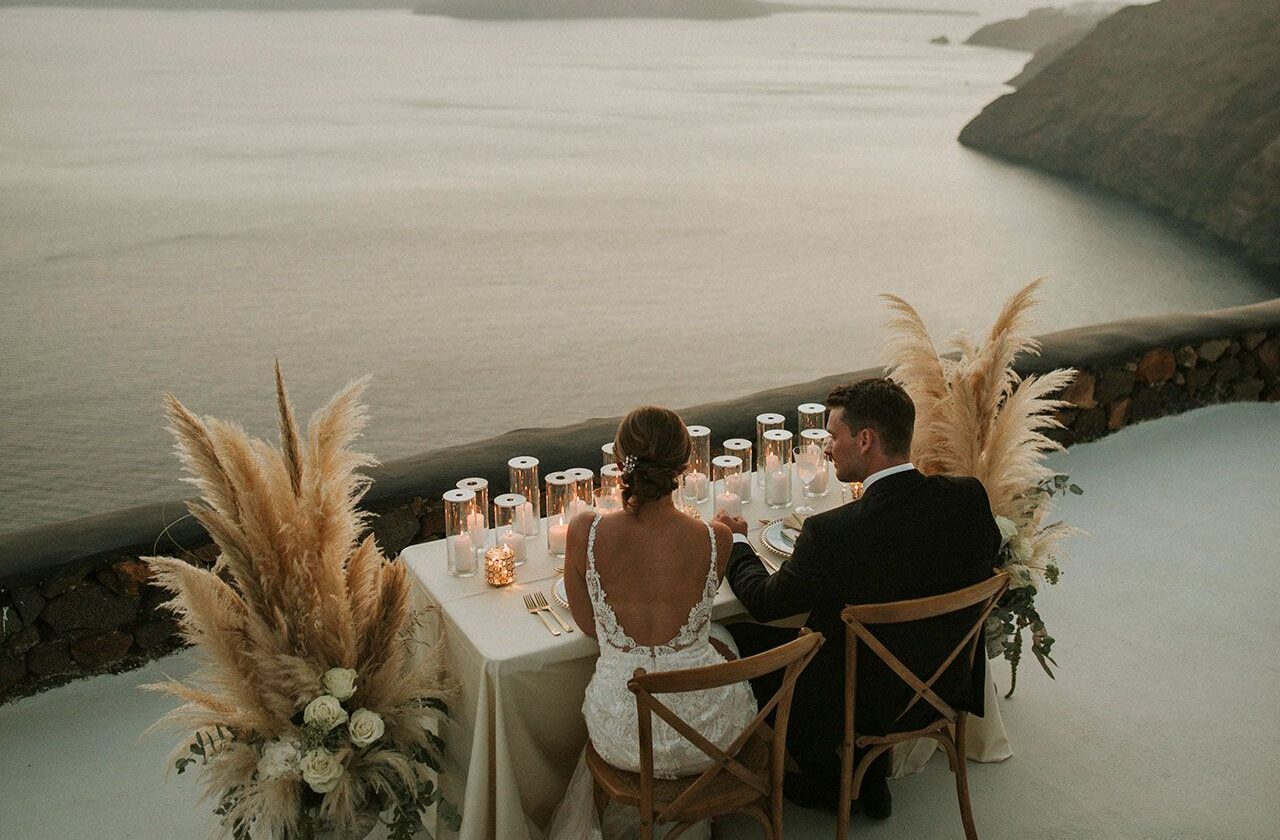Serbian weddings are an embodiment of cultural heritage and legacy, having been passed down for generations. Planning a Serbian wedding is a unique opportunity to celebrate the country’s rich traditions and customs, which are integral to the event’s overall authenticity. This guide provides insight into how to plan a memorable Serbian wedding by incorporating key customs, rituals, and music that bring the celebration to life.
Table of Contents
Traditions
Serbian weddings are a treasure trove of cherished customs and traditions that have stood the test of time. From the lively “kolo” dance to the meaningful roles of “kum” and “kuma”, there are many aspects of a Serbian wedding that make it truly special. Let’s take a closer look at some of the most notable customs:
Crowning
The couple faces the altar and the priest holds two crowns over the couple and prays for them. Then the priest places a crown on each of their heads. This crowning represents their union with Christ and the royalty of marriage.
The Kolo Dance
One of the highlights of a Serbian wedding is the “kolo,” a joyous dance performed with family and friends that begins in a circle and eventually leads into an elaborate spiral. This tradition symbolizes unity, love, and celebration. It’s also a surefire way of getting almost everybody out onto the dancefloor. The beauty of the kolo also lies in its magnetic pull, as it draws guests in with the electric energy that enwraps the dancefloor. You’ll find that even guests who have never performed it before find themselves jumping in.
P.s. It’ll also count as your cardio for the week.
The Role of the Kum & Kuma
The “kum,” best man, and “kuma”, maid of honor, are crucial figures in the wedding ceremony. It’s tradition for these roles to be fulfilled by those who are not related to the bride or groom (usually best friends to the couple), and who the couple aligns with on a spiritual level. The kum and kuma support the newlyweds by offering guidance throughout the marriage, and may even become godparents to the couple’s children. When the couple officially ties the knot, these individuals – and their families by extension – become each other’s “kumovi”.
Grabbing of the Apple
It’s tradition in Serbian culture for the groom and his wedding party to pick up the bride from her family’s home before making their way to the church together. But before this occurs, a floral arch is placed at the entry to the property where an apple is tied to the highest point. Most fathers of the bride will make this height a little difficult for entertainment purposes, and you’ll see why in a moment. Upon arrival at his bride-to-be’s home, the groom must jump to grab the apple before he’s allowed to enter. And depending on the height of the groom (and how much the father wants a show for his guests), there may be a few jumps involved before he’s successful.
The Reveal of the Bride
As mentioned above, it’s customary for the bride and groom to meet at the bride’s home rather than at the altar. Another tradition many like to include on the day is the ultimate reveal of the bride. The “dever”, who is the brother or cousin of the groom, is required to negotiate a cost with the brother of the bride for her to be brought out. However, the bride usually picks two to three of her guests (sometimes a cousin, sister or perhaps even a male relative if she wants a good laugh) to dress up in a bridal veil and wait in the room with her. From here, the dever offers the agreed cost to the brother who will then open the door to the first “false” bride. As each false bride is presented, the dever must pay up for the door to be opened again. It’s only when the bride’s family deem the amount worthy, that the dever can bring out the bride and the groom gets to lay his eyes on his beautiful bride for the first time.
The Money Dance
During the reception, guests take turns dancing with the bride or groom and pinning money to their clothes. This is a way for guests to show their support and help the couple start their new life together.
Food
Food also plays a major role in Serbian weddings. The families of the bride and groom will typically host morning festivities at their homes for their guests where elaborate platters of meat, cheese and traditional Serbian desserts are served before making their way to the ceremony. Upon arrival at the reception, guests can expect mezze platters to start before main dishes such as sarma, pork, cevapi or pita are brought out. Alongside the wedding cake, Serbian “kolace” are served as dessert. These sweets are typically bite-sized and come in an array of flavors and selection.
Rakija, a traditional Serbian brandy, is served throughout the day’s celebrations and will sometimes hold some significance to who crafted it. You may find members of both families wearing a traditional wooden “buklija” containing the rakija. This brandy is of the highest-quality and might be made by a close relative to the couple.
Music
The soulful sounds of Serbian music are an integral part of every wedding celebration, bringing joy and energy to the festivities. Traditional Serbian music is characterized by the use of instruments such as the accordion, tamburica, and trumpet, and is often accompanied by spirited singing and dancing.
A Serbian wedding is a celebration of tradition, family, and community. By incorporating customs such as the kolo dance, the kum, and traditional Serbian food and music, you can create a memorable event that reflects your cultural heritage and celebrates your unique love story. Whether you’re of Serbian descent or simply appreciate the rich traditions of Serbian culture, a Serbian wedding is sure to be a festive and unforgettable occasion.
READ MORE: How to Plan a Turkish Wedding

